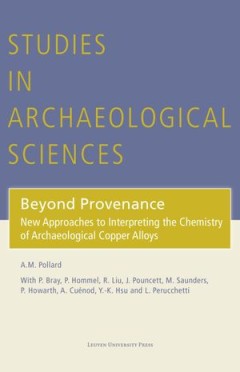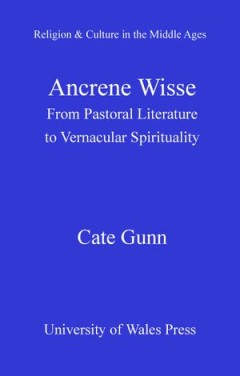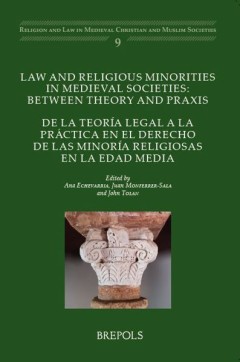Filter by

Remanufacturing and Advanced Machining Processes for New Materials and Compon…
Remanufacturing and Advanced Machining Processes for Materials and Components presents current and emerging techniques for machining of new materials and restoration of components, as well as surface engineering methods aimed at prolonging the life of industrial systems. It examines contemporary machining processes for new materials, methods of protection and restoration of components, and smar…
- Edition
- -
- ISBN/ISSN
- 9781000528671
- Collation
- -
- Series Title
- -
- Call Number
- -

Beyond Provenance
Human intentionality in chemical patterns in Bronze Age metals For the last 180 years, scientists have been attempting to determine the ‘provenance’ (geological source) of the copper used in Bronze Age artefacts. However, despite advances in analytical technologies, the theoretical approach has remained virtually unchanged over this period, with the interpretative methodology only changing …
- Edition
- -
- ISBN/ISSN
- 9789461662668
- Collation
- -
- Series Title
- -
- Call Number
- 930.1 POL b

Qualities of food
This book addresses current controversial debates about food quality. What is it that makes people decide that food is of good, or alternatively of dubious, 'quality'? How food is produced, how it is prepared, how it tastes and in what circumstances it is consumed are all dimensions of its quality. Chapters address a number of intriguing questions: how do people make judgements about taste?; ho…
- Edition
- -
- ISBN/ISSN
- 9780719068546
- Collation
- -
- Series Title
- -
- Call Number
- -

Religious minorities, integration and the State / État, minorités religieus…
Judaism, Christianity and Islam have coexisted in Europe for over 1300 years. The three monotheistic faiths differ in demography, in the moment of their arrival on the continent and in the unequal relations they maintain with power: Christianity was chosen by a large number of inhabitants and became — in spite of important differences according to place and time —a religion of state. The or…
- Edition
- -
- ISBN/ISSN
- 9782503564999
- Collation
- -
- Series Title
- -
- Call Number
- -

Ancrene Wisse
Provides an introduction to "Ancrene Wisse", one of the most important works in English of the thirteenth century. This book offers a fresh contextualisation which engages with the history of lay piety and vernacular spirituality in the Middle Ages. This book is innovative in that it provides an introduction to "Ancrene Wisse", one of the most important works in English of the thirteenth centur…
- Edition
- -
- ISBN/ISSN
- 9780708320341
- Collation
- -
- Series Title
- -
- Call Number
- -

Law and Religious Minorities in Medieval Societies
This volume shows through the use of legal sources that law was used to try to erect boundaries between communities in order to regulate or restrict interaction between the faithful and the non-faithful; and at the same time shows how these boundaries were repeatedly transgressed and negotiated. Muslim law developed a clear legal cadre for dhimmīs, inferior but protected non-Muslim communities…
- Edition
- -
- ISBN/ISSN
- 9782503566948
- Collation
- -
- Series Title
- -
- Call Number
- -

CLARIN in the Low Countries
This book describes the results of activities undertaken to construct the CLARIN research infrastructure in the Low Countries, i.e., in the Netherlands and in Flanders (the Dutch-speaking part of Belgium). CLARIN is a European research infrastructure for humanities and social science researchers that work with natural language data. This book introduces the CLARIN infrastructure, describes vari…
- Edition
- -
- ISBN/ISSN
- 9781911529255
- Collation
- -
- Series Title
- -
- Call Number
- -

Children after a Natural disaster
"Catastrophes and natural disasters lead to numerous problems in the education of children and teenagers, who present as the most vulnerable subjects in the communities affected. Often, in these circumstances, adults (educators, teachers, parents) do not know how to respond to their needs, reactions and feelings. What do we need to know about childhood trauma? What answers should we give to chi…
- Edition
- -
- ISBN/ISSN
- 9788891767974
- Collation
- -
- Series Title
- -
- Call Number
- -

Users' Needs Report on Play for Children with Disabilities
The needs of children and parents about play when the child has a disability are explored by mean on surveys to disability associations and families were collected during 2016 in 30 countries by members of the EU COST LUDI network Play for children with disability.The users' needs concerning play for children with disabilities are also explored by mean of case studies at a country level, based …
- Edition
- -
- ISBN/ISSN
- 9783110537482
- Collation
- -
- Series Title
- -
- Call Number
- -

The Spectacle 2.0
Spectacle 2.0 recasts Debord's theory of spectacle within the frame of 21st century digital capitalism. It offers a reassessment of Debord’s original notion of Spectacle from the late 1960s, of its posterior revisitation in the 1990s, and it presents a reinterpretation of the concept within the scenario of contemporary informational capitalism and more specifically of digital and media labour…
- Edition
- -
- ISBN/ISSN
- 9781911534440
- Collation
- -
- Series Title
- -
- Call Number
- -
 Computer Science, Information & General Works
Computer Science, Information & General Works  Philosophy & Psychology
Philosophy & Psychology  Religion
Religion  Social Sciences
Social Sciences  Language
Language  Pure Science
Pure Science  Applied Sciences
Applied Sciences  Art & Recreation
Art & Recreation  Literature
Literature  History & Geography
History & Geography